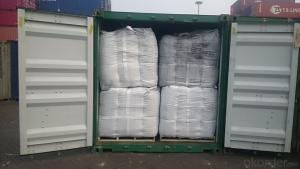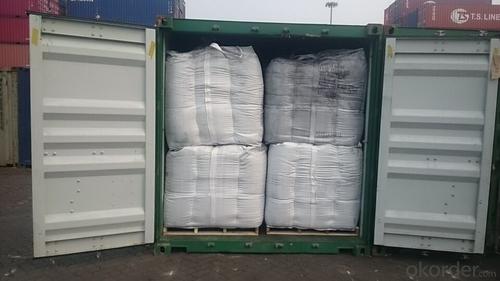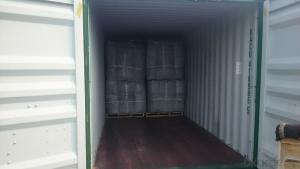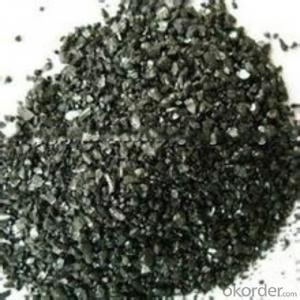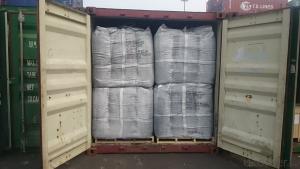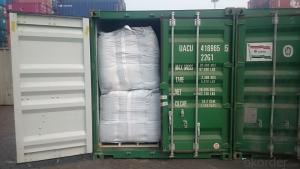GPC with lower Sulphur0.03% max with Moisture 0.5%
- Loading Port:
- Tianjin
- Payment Terms:
- TT OR LC
- Min Order Qty:
- 22 m.t.
- Supply Capability:
- 5000 m.t./month
OKorder Service Pledge
OKorder Financial Service
You Might Also Like
Introduction:
GPC has good characteristics with low ash, low resistivity, low sulphur, high carbon and high density. It is the best material for high quality carbon products. It is used as carbon additive in steel industry or fuel.
Features:
1.Our strong team provide you reliable service that make you feel purchasing is more easier
2. We ensure that we can supply capability with competitive price.
3. Work strictly to guarantee product quality,
4. Highest standard of integrity. Guarantee customer's benefit.
5. Supplying Pet Coke, Met coke, Foundry Coke, Carbon Raiser etc.
Specifications:
F.C.% | 95MIN | 94MIN | 93MIN | 92MIN | 90MIN | 85MIN | 84MIN |
ASH % | 4MAX | 5MAX | 6 MAX | 6.5MAX | 8.5MAX | 12MAX | 13MAX |
V.M.% | 1 MAX | 1MAX | 1.0MAX | 1.5MAX | 1.5MAX | 3 MAX | 3 MAX |
SULFUR % | 0.3MAX | 0.3MAX | 0.3MAX | 0.35MAX | 0.35MAX | 0.5MAX | 0.5MAX |
MOISTURE % | 0.5MAX | 0.5MAX | 0.5MAX | 0.5MAX | 0.5MAX | 1MAX | 1MAX |
Pictures
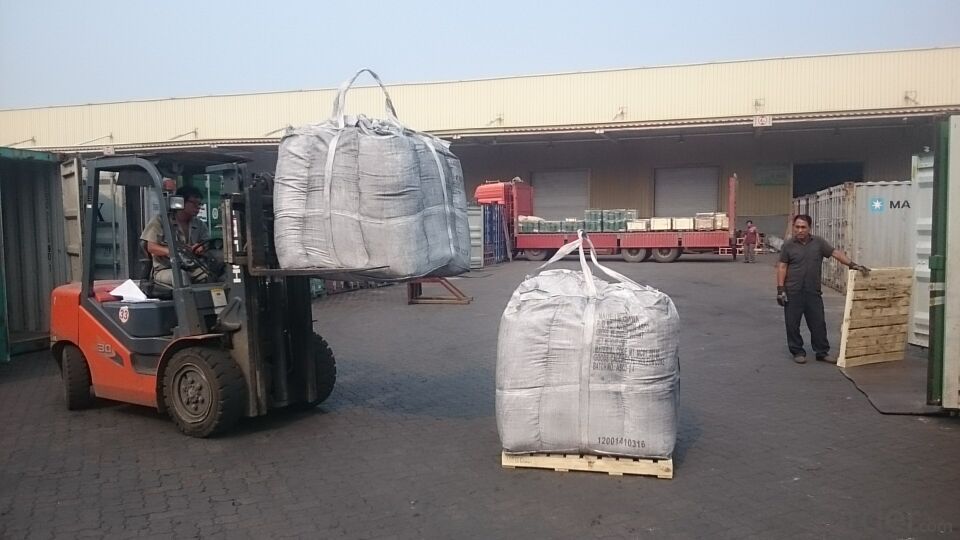
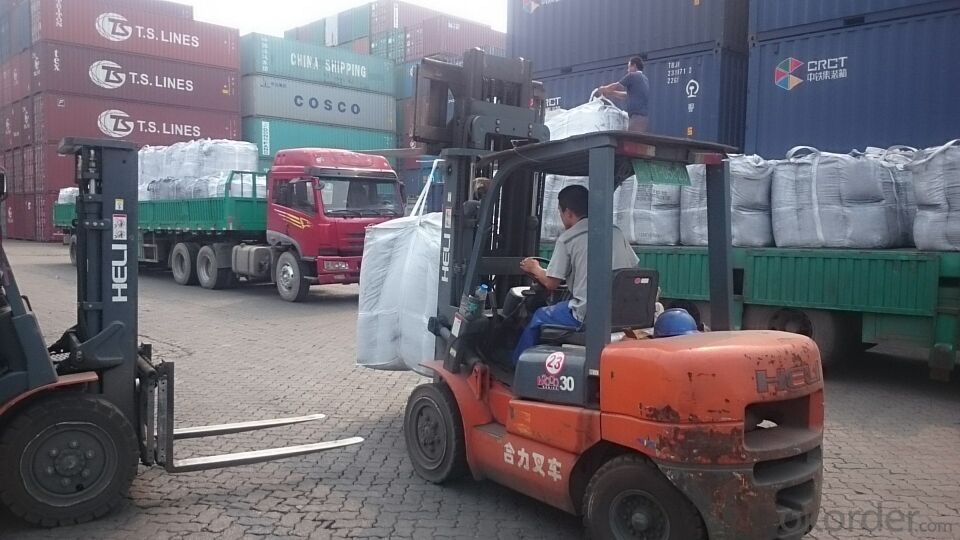
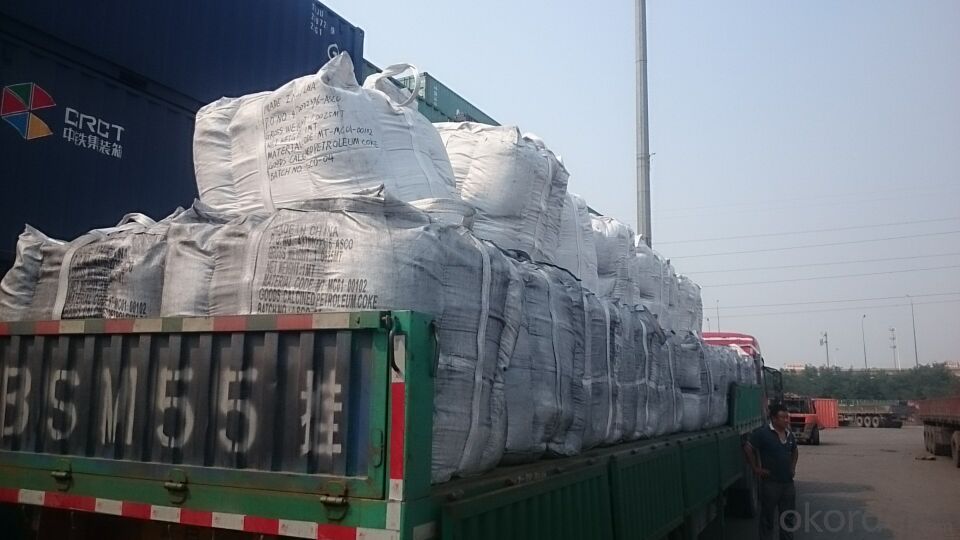
FAQ:
1. Your specification is not very suitable for us.
Please offer us specific indicators by TM or email. We will give you feedback as soon as possible.
2. When can I get the price?
We usually quote within 24 hours after getting your detailed requirements, like size, quantity etc. .
If it is an urgent order, you can call us directly.
3. Do you provide samples?
Yes, samples are available for you to check our quality.
Samples delivery time will be about 3-10 days.
4. What about the lead time for mass product?
The lead time is based on the quantity, about 7-15 days. For graphite product, apply Dual-use items license need about 15-20 working days.
5. What is your terms of delivery?
We accept FOB, CFR, CIF, EXW, etc. You can choose the most convenient way for you. Besides that,
we can also shipping by Air and Express.
6. Product packaging?
We are packed in bulk ship or in ton bag or placing in container or according to your requirements.
7. Notice
please note that the price on Alibaba is a rough price. The actual price will depends on raw materials, exchange rate wage and your order quantity .Hope to cooperation with you, thanks !
- Q: How is carbon used in the production of solar cells?
- Carbon is not typically used in the production of solar cells as a primary material. However, carbon-based materials such as carbon nanotubes or graphene may be used as conductive additives or in electrode materials to enhance the efficiency and performance of solar cells.
- Q: What is carbon offsetting in the automotive industry?
- Carbon offsetting in the automotive industry refers to the practice of compensating for the greenhouse gas emissions produced by vehicles. It involves investing in projects that reduce or remove carbon dioxide from the atmosphere, such as renewable energy projects, reforestation initiatives, or methane capture projects. By offsetting their emissions, automakers and individuals aim to neutralize or balance out the environmental impact of driving vehicles.
- Q: How does carbon contribute to the strength of composite materials?
- Carbon contributes to the strength of composite materials through its exceptional stiffness and high tensile strength properties. When carbon fibers are embedded in a matrix material, such as a polymer resin, they provide reinforcement and help distribute loads evenly throughout the composite. This reinforcement enhances the overall strength, durability, and resistance to deformation of the composite material, making it ideal for various applications in aerospace, automotive, and construction industries.
- Q: What are the long-term effects of increased carbon emissions on ecosystems?
- Ecosystems are significantly impacted by the increase in carbon emissions, with climate change being one of the most notable consequences. Carbon dioxide, a greenhouse gas, traps heat in the atmosphere and leads to rising temperatures, changes in weather patterns, and more frequent and intense extreme weather events like hurricanes, droughts, and wildfires. These climate changes have numerous negative effects on ecosystems. For example, the rising temperatures directly affect the behavior and physiology of plants and animals. Many species have specific temperature requirements for their survival, feeding, and reproduction. Even slight changes in temperature can disrupt their life cycles, causing population declines or even extinctions. Moreover, the increase in carbon emissions contributes to ocean acidification. This process occurs when excess carbon dioxide in the atmosphere dissolves in seawater, forming carbonic acid. The acidification has devastating consequences for marine ecosystems, especially for coral reefs and shell-forming organisms such as oysters and clams. It weakens their structures made of calcium carbonate and hinders their growth and reproduction, ultimately leading to their decline. Furthermore, carbon emissions influence the distribution and composition of plant communities. Carbon dioxide is essential for photosynthesis, and elevated levels can enhance plant growth and productivity. However, this can also result in changes in plant composition and the competitive balance between species, favoring certain fast-growing species at the expense of others. This disruption can impact the intricate relationships between plants, pollinators, herbivores, and other organisms, affecting the entire food web. Additionally, increased carbon emissions contribute to the loss of biodiversity. Many species are highly specialized and adapted to specific environmental conditions. As habitats change due to climate change, some species may struggle to adapt or find suitable alternatives, leading to declines or local extinctions. This loss of biodiversity can have cascading effects throughout ecosystems, disrupting ecological processes and reducing the resilience and stability of entire ecosystems. In conclusion, the increase in carbon emissions has far-reaching and harmful long-term effects on ecosystems. It causes climate change, ocean acidification, alters plant communities, and drives biodiversity loss. It is crucial to reduce carbon emissions and mitigate climate change in order to protect and preserve the health and functioning of ecosystems for future generations.
- Q: How do plants use carbon dioxide?
- Plants use carbon dioxide through a process called photosynthesis, which is vital for their survival. During photosynthesis, plants take in carbon dioxide from the air through small openings on their leaves called stomata. Inside the leaves, carbon dioxide combines with water, which is absorbed by the roots, to produce glucose and oxygen. The glucose is used by the plant as a source of energy to carry out various metabolic processes and to grow. Additionally, plants store excess glucose in the form of starch for future use. The oxygen produced during photosynthesis is released back into the atmosphere, which is crucial for the survival of other living organisms, including humans, as we depend on oxygen for respiration. Therefore, plants play a crucial role in maintaining the balance of carbon dioxide and oxygen in the atmosphere, making them essential for life on Earth.
- Q: What are the consequences of increased carbon emissions on human health?
- Increased carbon emissions have numerous consequences on human health. Firstly, carbon emissions contribute to the formation of air pollution, specifically fine particulate matter (PM2.5) and ground-level ozone, which can lead to respiratory issues such as asthma, bronchitis, and other respiratory diseases. Additionally, exposure to air pollution from carbon emissions has been linked to an increased risk of cardiovascular diseases, including heart attacks and strokes. Moreover, carbon emissions contribute to climate change, resulting in more frequent and intense heatwaves, extreme weather events, and the spread of infectious diseases. These phenomena can have direct and indirect impacts on human health, leading to heat-related illnesses, injuries, mental health issues, and the displacement of communities. Overall, the consequences of increased carbon emissions on human health are significant and require urgent action to mitigate their effects.
- Q: How is carbon used in the water treatment process?
- Carbon is used in the water treatment process in a variety of ways. One common method is through the use of activated carbon, which is highly porous and has a large surface area. This allows it to effectively adsorb and remove impurities from water. Activated carbon is often used in the form of granules, pellets, or blocks in water treatment facilities. It can be added to the water during different stages of the treatment process. For example, during the initial filtration stage, activated carbon can be used to remove particles, such as sediment and chlorine byproducts, that can affect the taste and smell of the water. Additionally, activated carbon is effective in removing organic compounds, such as pesticides, herbicides, and industrial chemicals, that may be present in the water. These compounds can be harmful to human health if consumed, so the use of activated carbon helps to ensure the water is safe for drinking. Another way carbon is used in water treatment is through the process of carbonation. This involves the injection of carbon dioxide gas into the water, which helps to lower its pH level. Carbonation is often used in the treatment of alkaline water sources, as it helps to neutralize the water and make it more suitable for consumption. Overall, carbon plays a crucial role in the water treatment process by effectively removing impurities and improving the quality of drinking water. Its adsorption capabilities make it a valuable tool in ensuring that water is safe and healthy for consumption.
- Q: How can carbon be stored underground?
- Carbon can be stored underground through a process called carbon capture and storage (CCS). This involves capturing carbon dioxide (CO2) emissions from industrial sources, such as power plants or cement factories, and then storing it deep underground in geological formations. The first step in this process is capturing the CO2 emissions before they are released into the atmosphere. There are several technologies available for this, including post-combustion capture, pre-combustion capture, and oxy-fuel combustion. These technologies separate the CO2 from other gases, such as nitrogen, and produce a concentrated stream of CO2 that can be easily stored. Once the CO2 is captured, it needs to be transported to a suitable storage site. This is typically done through pipelines or ships, depending on the distance and the location of the storage site. The CO2 is then injected deep underground into geological formations, such as depleted oil and gas reservoirs, saline aquifers, or coal seams. The storage sites are carefully selected based on their ability to securely and permanently store the CO2. The geological formations must have a layer of impermeable rock above them, known as a caprock, to prevent the CO2 from leaking back to the surface. The sites are also monitored regularly to ensure the stored CO2 remains securely underground. Storing carbon underground can significantly reduce CO2 emissions and help mitigate climate change. It effectively prevents the release of CO2 into the atmosphere, where it would contribute to the greenhouse effect and global warming. Furthermore, CCS can be combined with enhanced oil recovery (EOR) techniques, where the injected CO2 is used to extract more oil from depleted reservoirs, making the process economically viable. However, it is important to note that carbon storage is not a permanent solution to climate change. It can play a role in reducing emissions while transitioning to cleaner energy sources, but it should not replace efforts to decarbonize the economy and reduce reliance on fossil fuels. Additionally, the long-term safety and environmental impacts of storing carbon underground need to be thoroughly studied and understood to ensure its effectiveness and sustainability.
- Q: What is carbon capture and storage?
- Carbon capture and storage (CCS) is a process that involves capturing carbon dioxide emissions from industrial sources, such as power plants, and storing them underground or using them for various purposes. It aims to mitigate the release of greenhouse gases into the atmosphere, helping to combat climate change by reducing carbon dioxide levels.
- Q: I saw a cell phone in the magazine, the global release of 900, no camera, what function is F1 carbon fiber material, actually sold 40000 yuan a piece!.. Everyone said that the circulation is so small, worth so much money? Or carbon fiber material worth so much money?
- Carbon fiber material is very expensive, we are specializing in the production of carbon fiber bicycle accessories company, we know more about this industry.. Such an analogy, an aluminum alloy wheel, that is, the cost of more than 100 yuan, to replace the same carbon fiber material costs more than 1000 of the cost.. Carbon fiber belongs to high-end materials, and foreign countries is to control production, because many weapons and aircraft also use this material, the United States will build weapons in other countries, so are the strict control of each production state of carbon fiber materials..
Send your message to us
GPC with lower Sulphur0.03% max with Moisture 0.5%
- Loading Port:
- Tianjin
- Payment Terms:
- TT OR LC
- Min Order Qty:
- 22 m.t.
- Supply Capability:
- 5000 m.t./month
OKorder Service Pledge
OKorder Financial Service
Similar products
Hot products
Hot Searches
